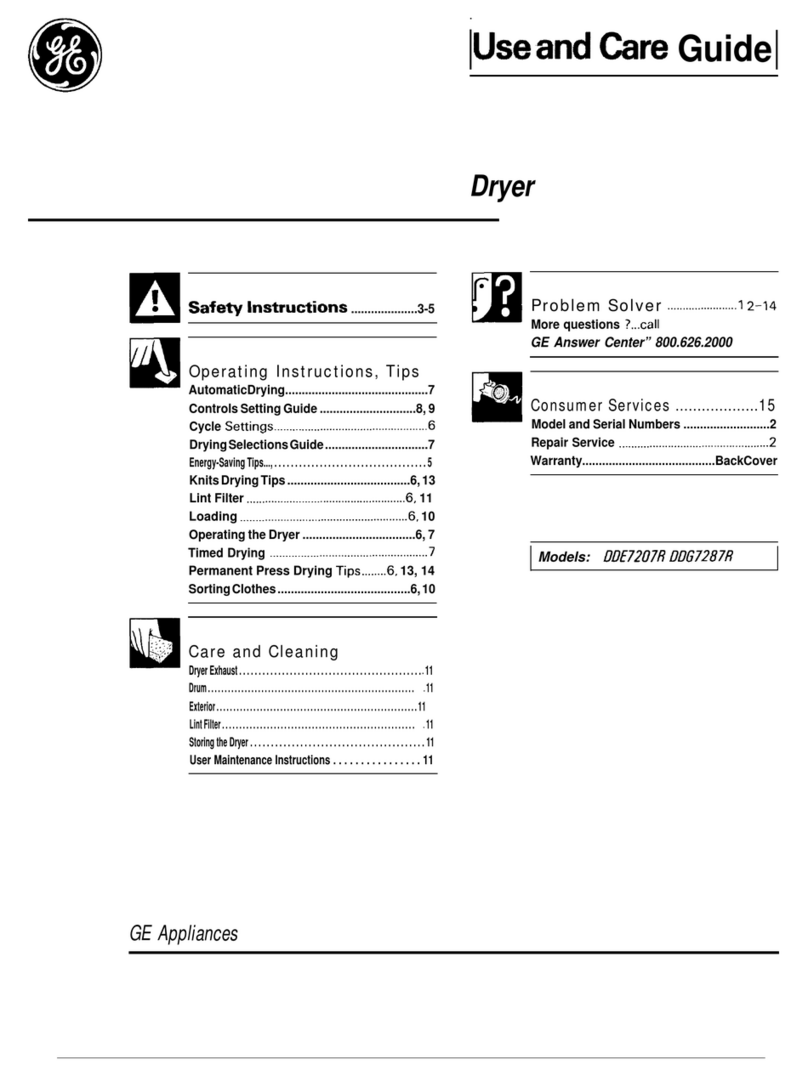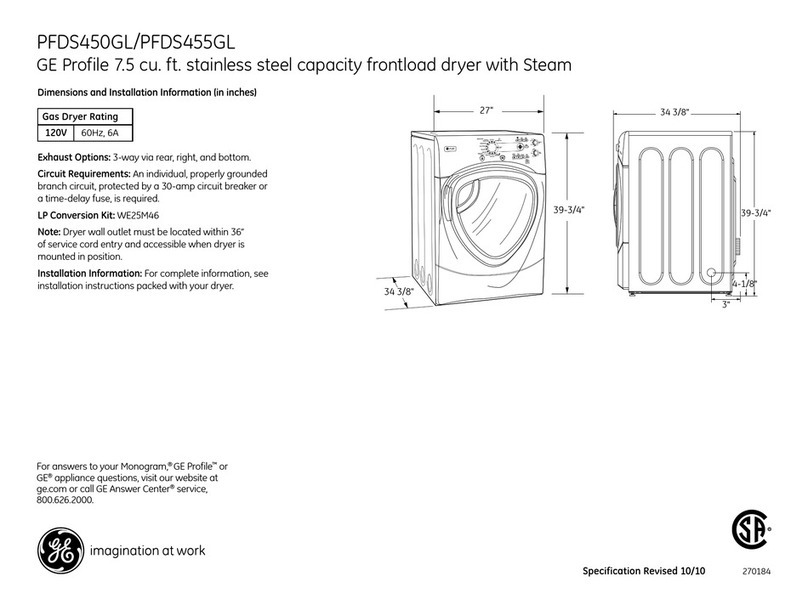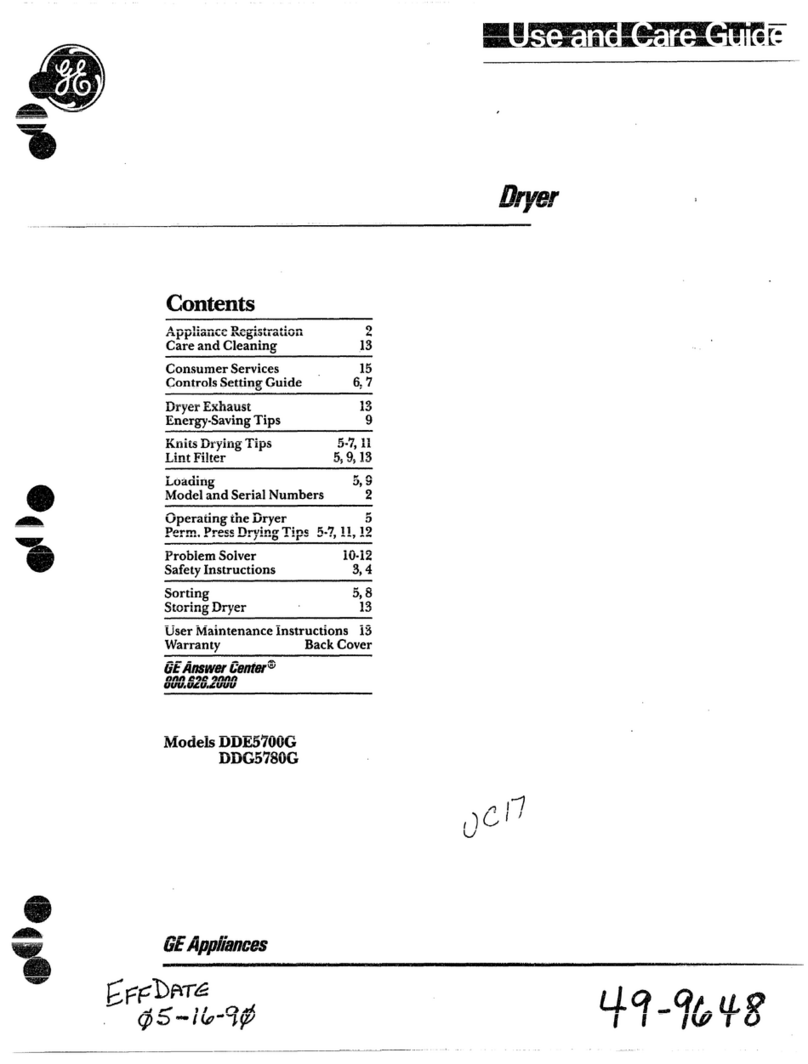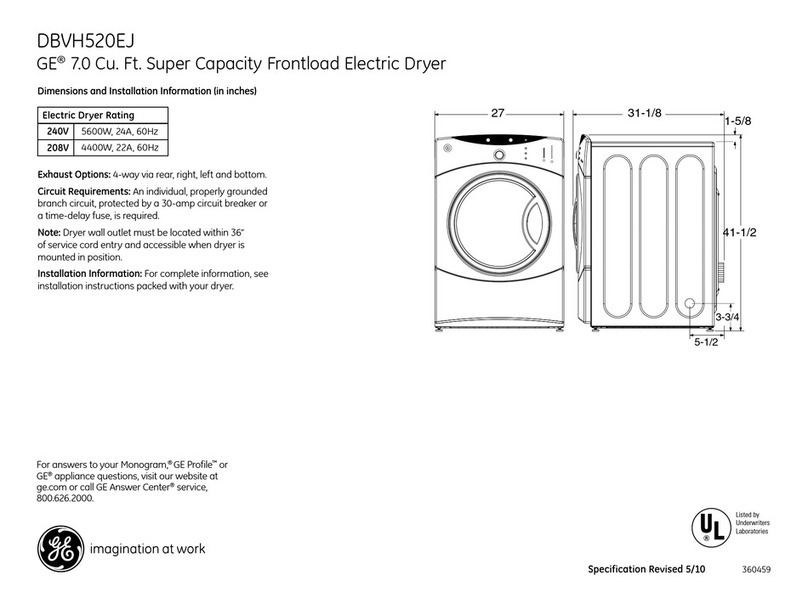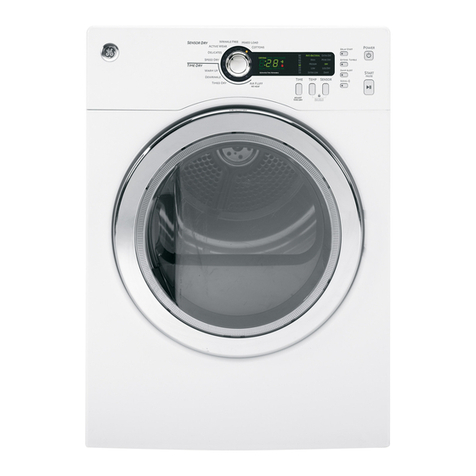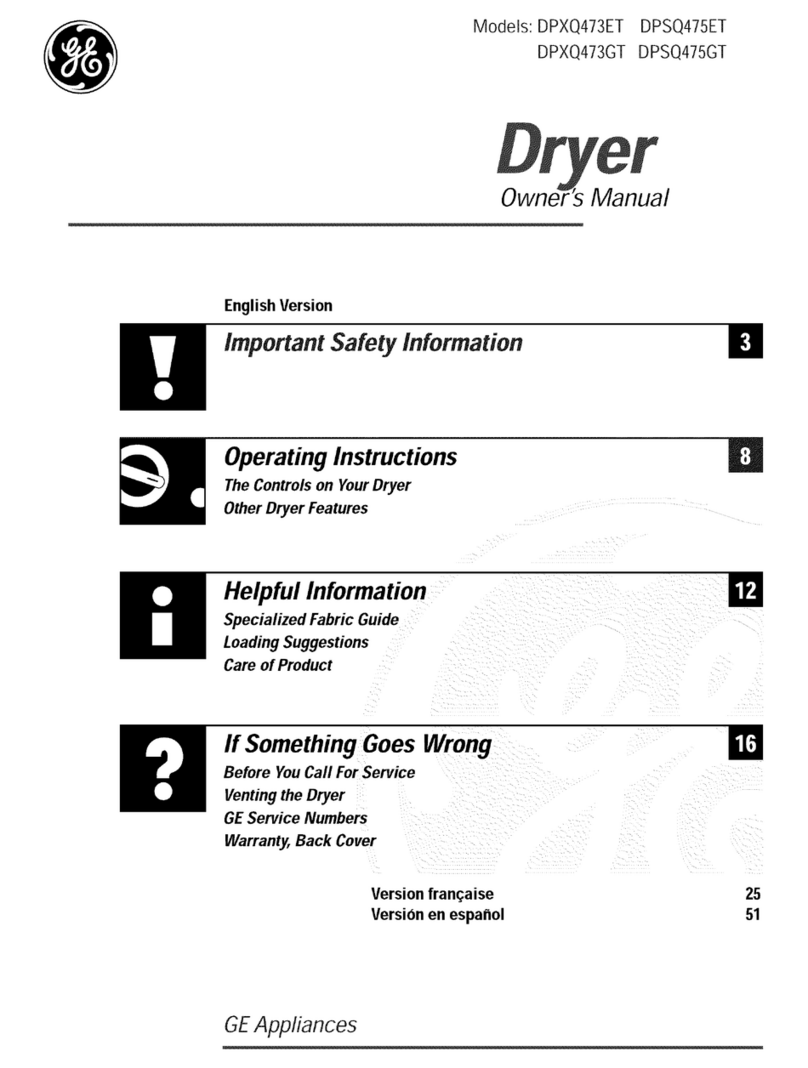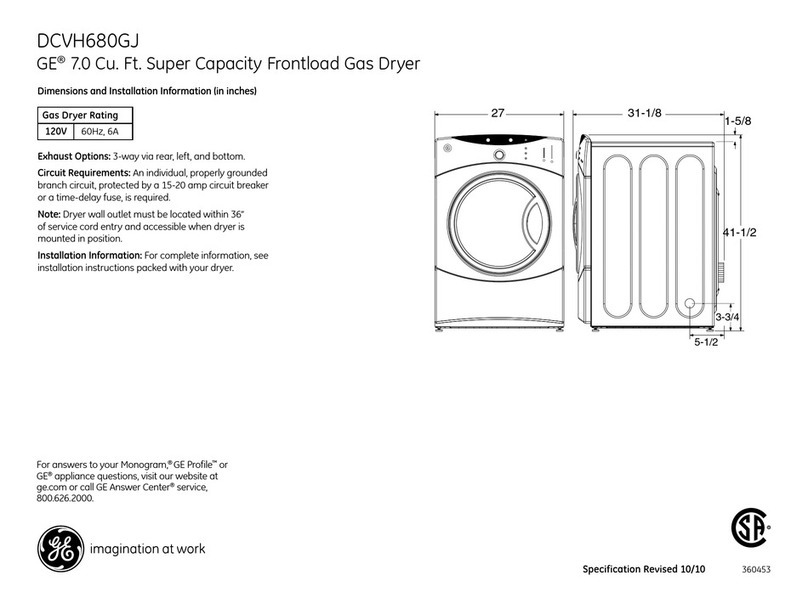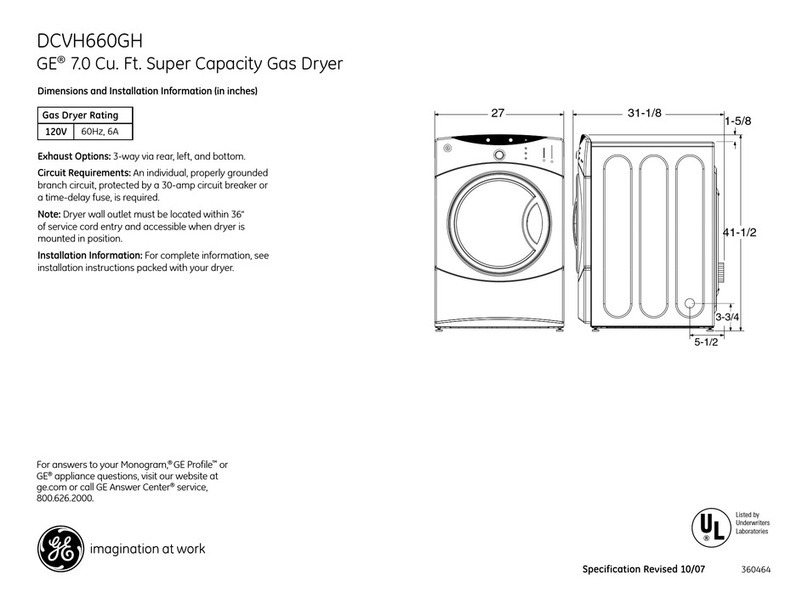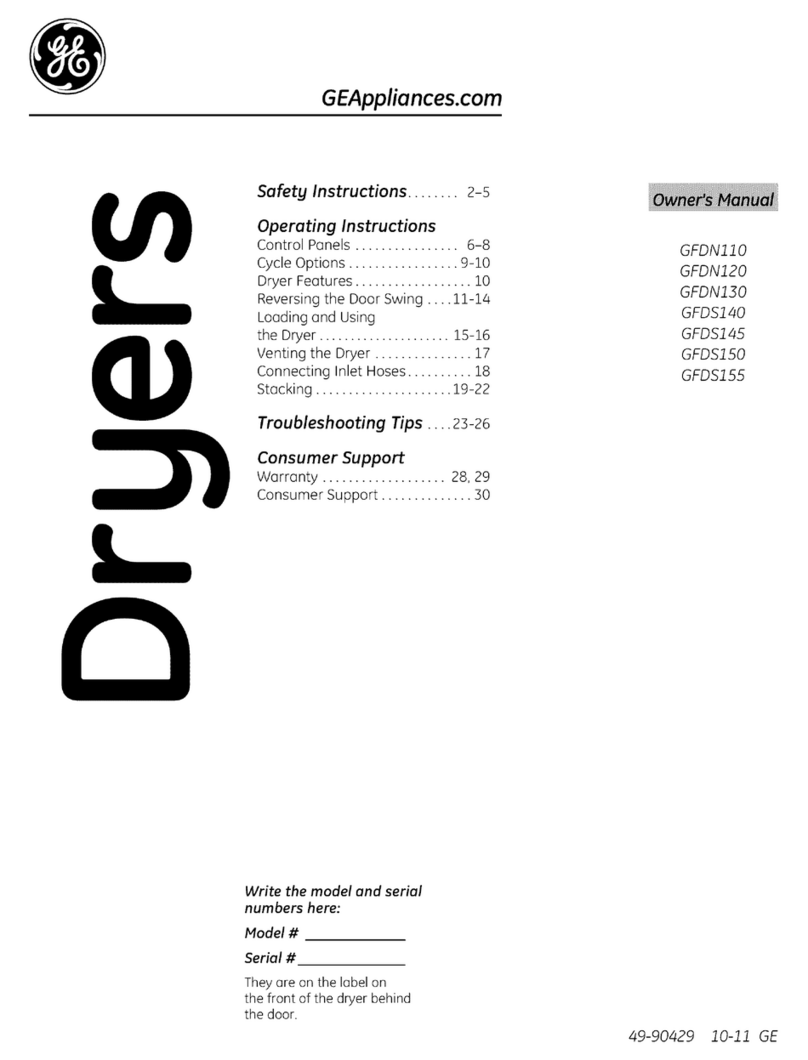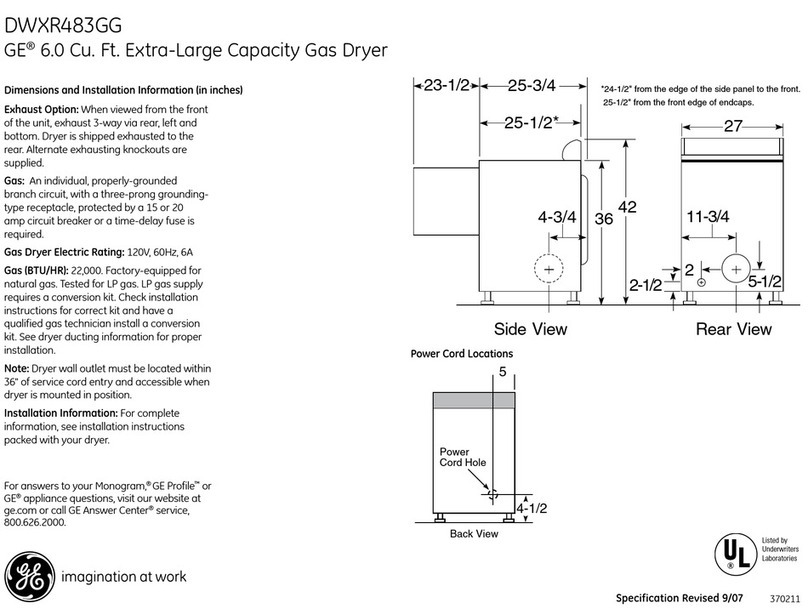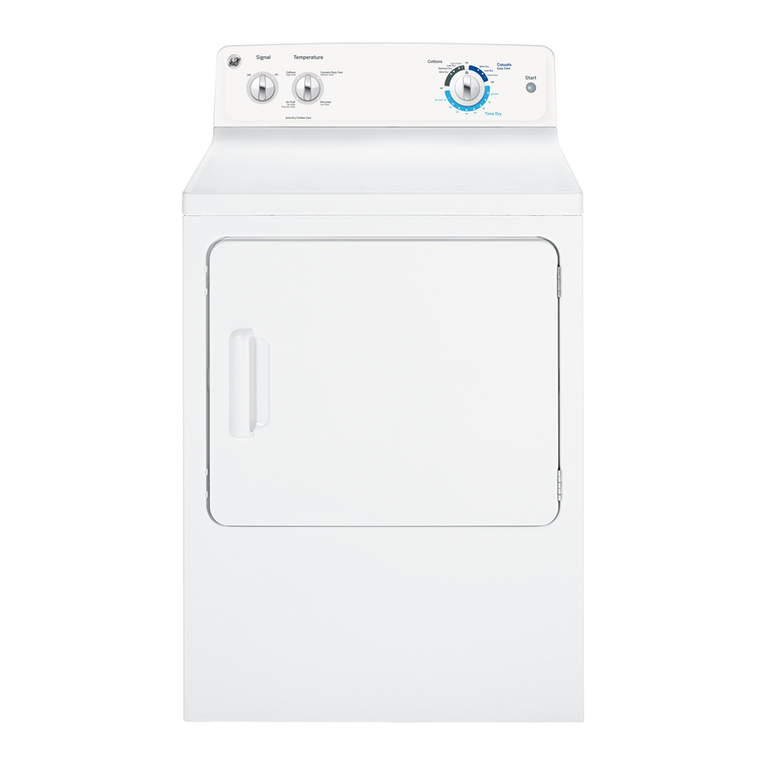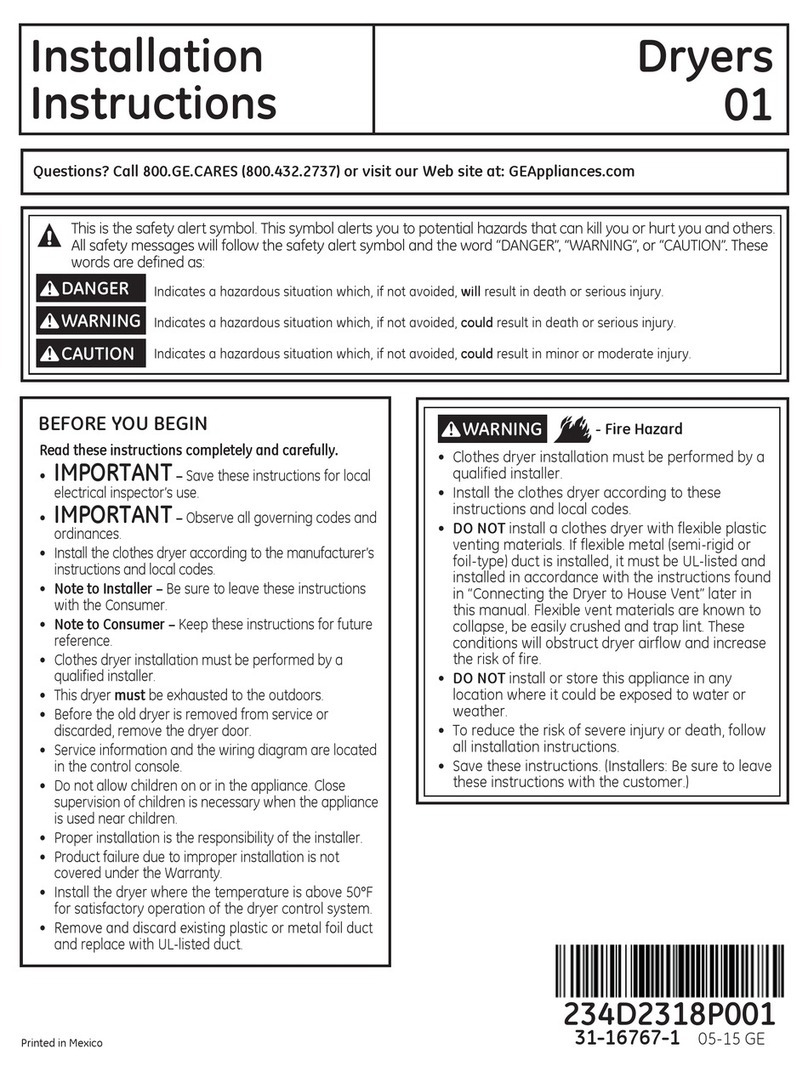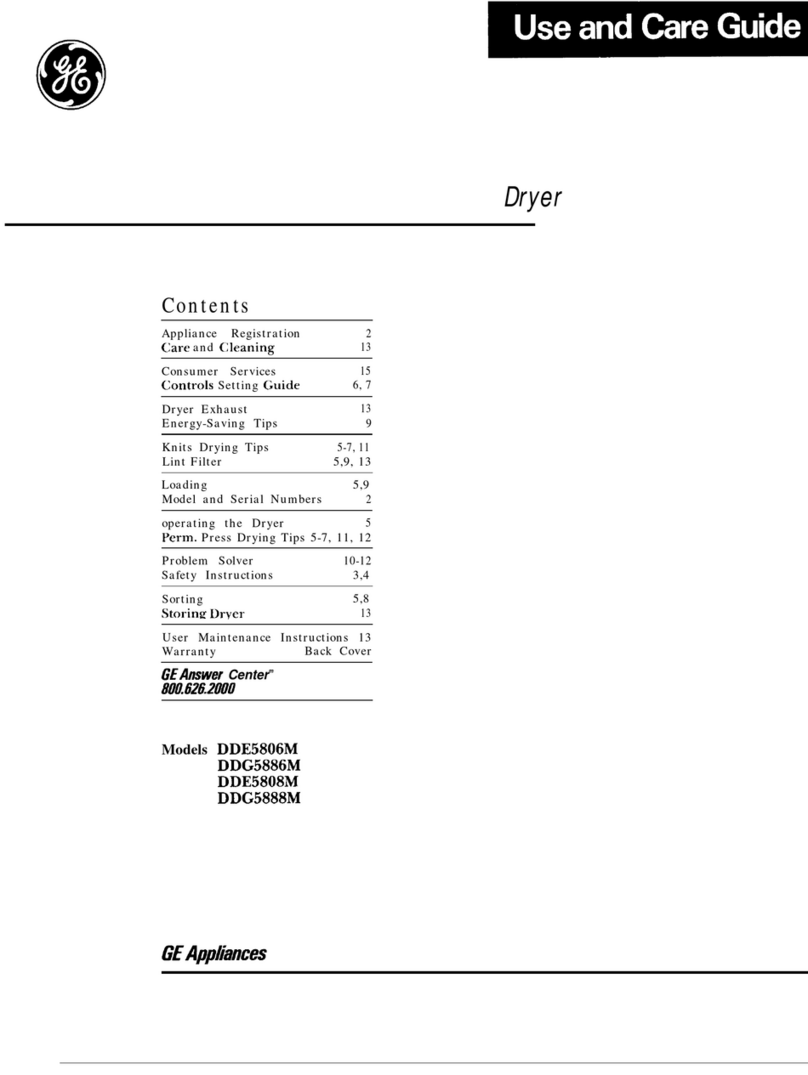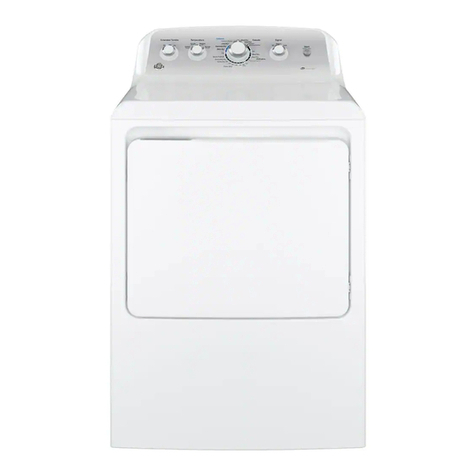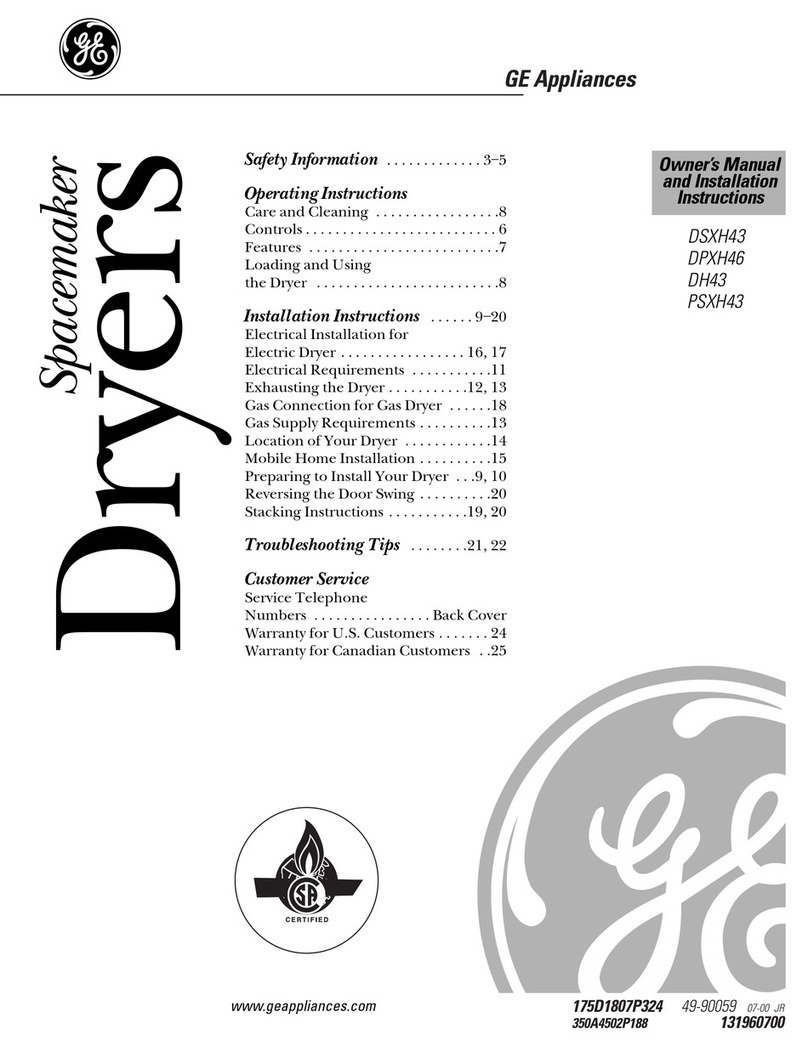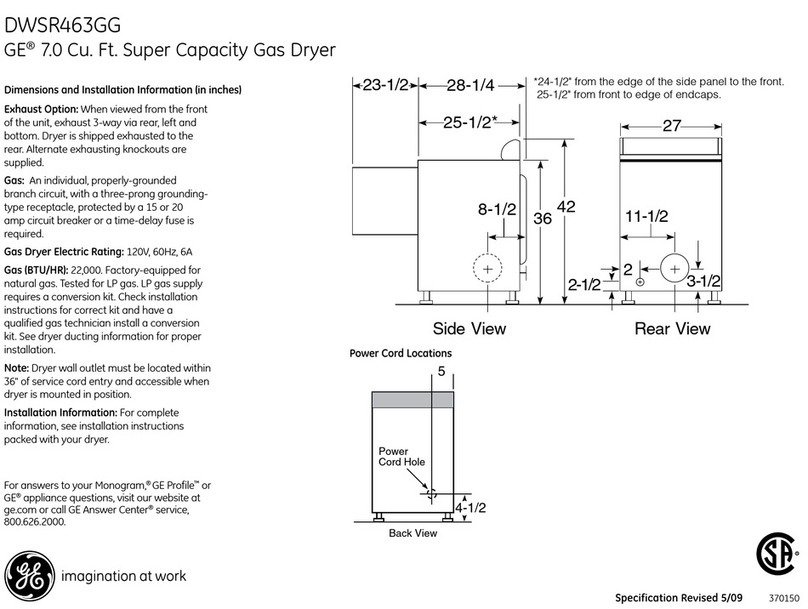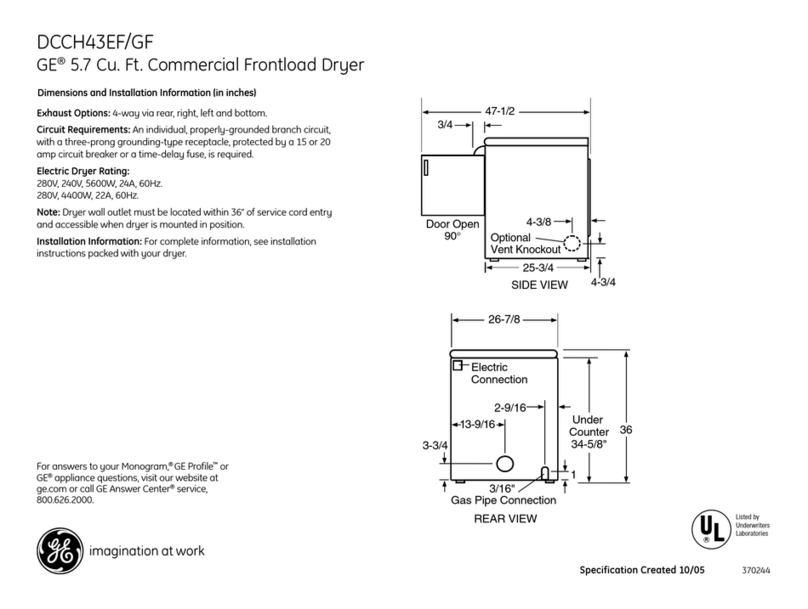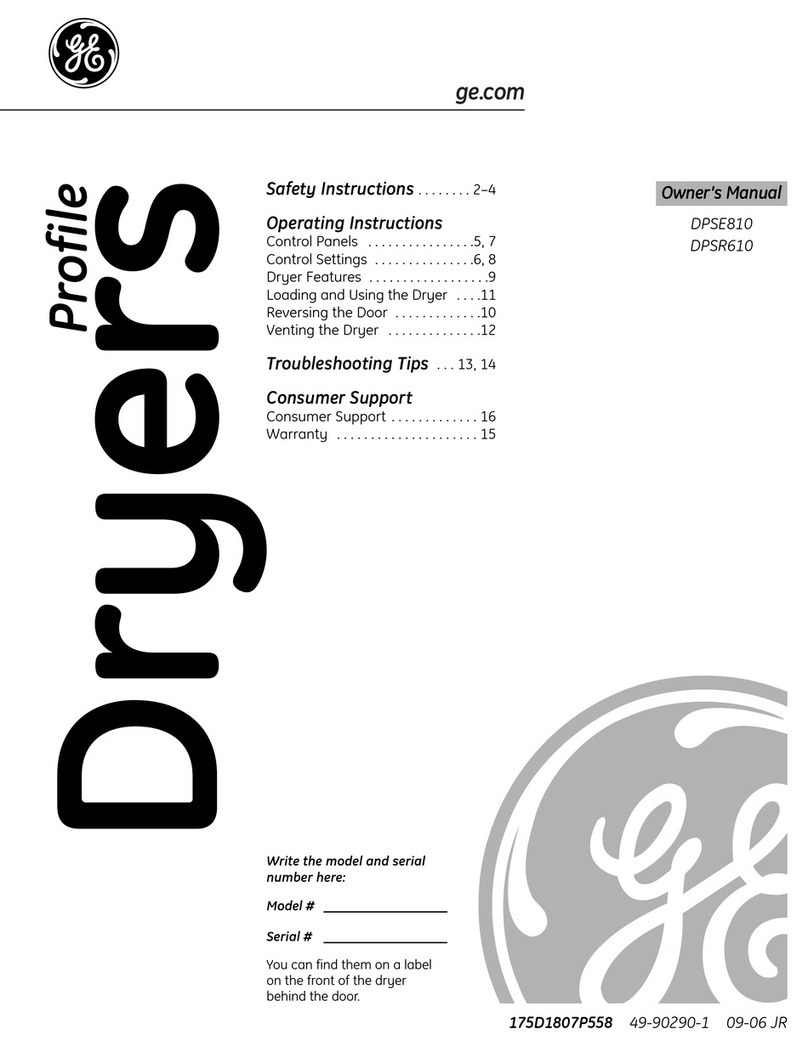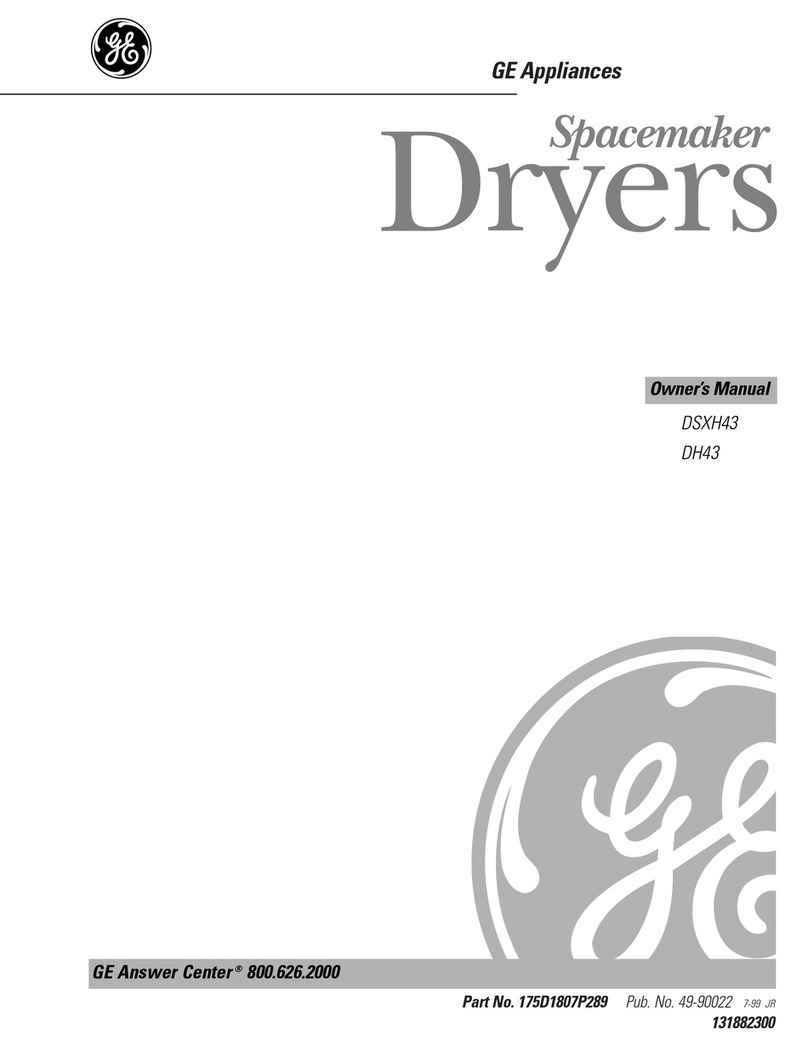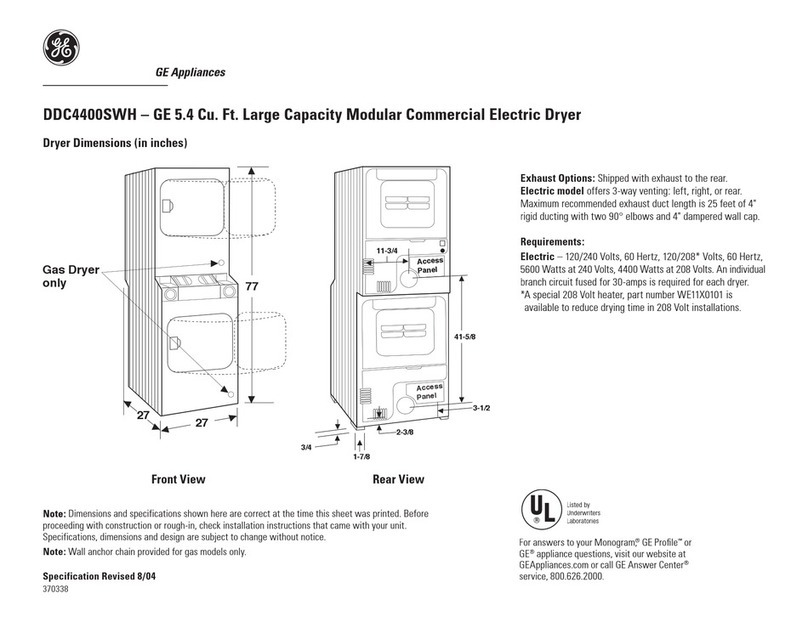WOW~T
SMEW
mSTRUCTIONS
Read all instructions before using this appliance.
W-G—TO
reduce the risk
of fire, electric shock, or injury
to persons when using this
appliance, follow basic
precautions, including the
following:
. Use this appliance
only
fOr
i~
intended purpose
as
described in
this Use and Care Book.
●
This dryer must be properly
ins~ed
and located in accordance
with the Instigation hstructions
before it is used.
If you did not
receive an Installation Instructions
sheet with your dryer, you can
obtain one
by
contacting
the
service location nearest you.
–Properly ground to conform
with all governing codes and
ordinances. Follow details in
Installation Instructions.
—Locate where the temperature
is above
50°F
(lO°C)
for
satisfactory operation of the
dryer control system. Do not
install or store the dryer where it
will be exposed to the weather.
–Connect to a properly rated,
protected and
shed
power-supply
circuit to avoid electrical overload.
–Exhausting to the outside is
STRONGLY RECOMMENDED
to prevent large amounts of
moisture and lint from being blown
into the room.
Carefilly
follow the
Exhausting Details in the
Installation Instructions. If
your
dryer is
not
exhausted to the
outside, see special instructions on
page 8.
●
When disconnecting this
appliance pull by the plug rather
than the cord to avoid damage to
the cord or junction of cord and
plug. Make sure that the cord is
located so that it
wti
not be stepped
on, tripped over or otherwise
subjected to damage or stress.
●
Do not repair or replace any
part of the
appKance
or attempt
any servicing
tiess
specifically
recommended in this Use and
Care Book or in published
user-
repair instructions that you
understand and have the skills to
carry out.
To
mitimbe
the
possibtiity
of a
fire
h=rd.
●
Do not use heat to dry articles
containing rubber, plastic, or
similar materials (such as
padded bras, tennis shoes,
galoshes, bath mats, rugs, bibs,
baby pants, plastic bags, etc.) as
these materials may melt or
burn. Also, some rubber
materials, when heated, can
under certain circumstances
produce fire by spontaneous
combustion.
●
Garments labeled “Dry Away
From Heat” (such as life jackets
containing Kapok) must not be put
in your dryer.
●
w
not
wash
or dry articles
that
have been cleaned in, washed in,
soaked in, or spotted with
combustible or explosive
substances
(such
as gasoline,
degrease~
drycleaning
solvents,
kerosene, etc.) which may give
off vapors that could igtite or
explode, Do not use or store such
substances
odor
around
your
washer and/or dryer
during
operation.
*Any
article
on
which you have
used
a cleaning solvent, or which
contains flammable
rnaterids
(such
as cleaning
clffths,
mops, towels
used
in
beauty
dons,
restaurants
or barbershops, etc.) must not
be
placed
in
or
near the dryer until
dl
traces
of
tiese
flammable
liquids
or
solids and
their
-s
have
been
removed. There are many highly
flammable items used in homes
such as: acetone, denatured
alcohol, gasoline, kerosene, some
household cleaners, some spot
removers, turpentines, waxes, wax
removersandproductscontaining
petroleumdistillates.
●
cle~
the
lint
filter
before
~ch
load to prevent lint
accumdation
inside the dryer or in the room.
DO NOT OPERATE
T~
DR~R
WITHOUT THE
L~
NLTER
IN PLACE.
●
K~p
area around and
underneath your
appfiance
free
from the accumulation of
combustible materials, such as
~nt,
paper, rags, chemicals, etc.
●
Do not store items that may burn
or melt (such as clothing, paper
material, plastics or plastic
containers,
etc.)
on top of the dryer
during operation,
●
The
~~rior
of the
mac~e
and
the exhaust
duct
connector
inside
the dryer should be cleaned
periodically by a qualified
individual.
.
E~~
dud
(s~
~~~ation
instructions). Use
ody
metal
duct
inside dryer or for exhausting
dryer to the outside.
~titi
the possibility
of
i@ury.
●
Never
reach
into the dryer
wtie
the
drum
b
moving. Before
loading,
unloa+
or adding
clothes, wait
untfi
the drum has
completely stopped.
(conrinuednextpge)
3
—.—.
.






